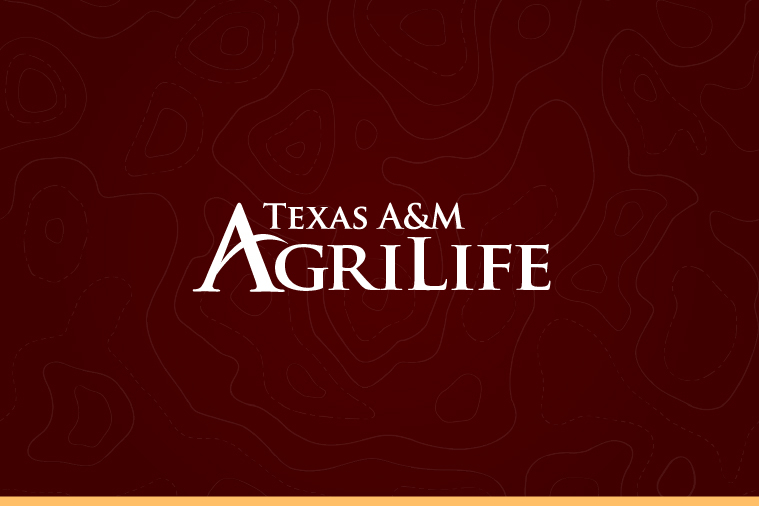Srinivasan recognized with Regents Fellow Service Award
Writer: Kay Ledbetter, 806-677-5608, [email protected]
Contact: Dr. Raghavan Srinivasan, 979-845-5069, [email protected]
COLLEGE STATION – Dr. Raghavan Srinivasan, Spatial Sciences Laboratory director at Texas A&M University and a Texas A&M AgriLife Research scientist, has been named a Regents Fellow by the Texas A&M University System Board of Regents.

The award was presented Feb. 10 at the 2014-2015 Regents Awards Reception and Dinner on the Texas A&M campus in College Station.
The board established the Regents Fellow Service Awards in 1998 to recognize employees who have made exemplary contributions to their university or agency and to the people of Texas.
Srinivasan, also a professor in the department of ecosystem science and management, has brought national and international recognition to Texas A&M over the past 23 years in the areas of spatial sciences; computer-based natural resource modeling; and land use and climate change impacts on hydrology, soil conservation, water quality and crop production.
He began his career with AgriLife Research in 1992 at Temple. He moved onto the Texas A&M campus in 1999 to become assistant director of the Mapping Science Laboratory and became the director of Spatial Sciences Laboratory the following year.
“Dr. Srinivasan’s efforts have raised awareness, respect and research funding for Texas A&M with Texas state agencies, federal agencies, international research and development organizations and foreign national universities and research organizations,” Dr. Kathleen Kavanagh, Texas A&M ecosystem science and management department head, said in her nomination.
“The value of these relationships extends far beyond the very substantial research funding they have attracted, creating opportunities to assist cities and regional water authorities in Texas and far beyond,” Kavanagh said. “One telling anecdote is that in the last two to three years several major Brazilian universities and federal agencies have begun to consult with Dr. Srinivasan to assist major cities and states to analyze the risks that droughts, floods and pollution pose to their water supplies.”
Over the years, Srinivasan’s research and service activities have contributed to major improvements in assessments and development of watershed management systems, benefiting natural resources and sustainable agricultural production through conservation practices in the U.S. and across the globe, the nomination stated.
Srinivasan is known for working with colleagues in the U.S. Department of Agriculture-Agricultural Research Service and Natural Resources Conservation Service to develop the Soil and Water Assessment Tool, known as SWAT, according to his nomination. This public domain, watershed-scale computer simulation model predicts impacts of weather, soils and land use on water supplies and pollution, soil erosion and fertility, and crop production.
In the U.S., Srinivasan has made significant contributions to several national water quality assessments and analytical systems, most recently the USDA-Natural Resources Conservation Service’s Conservation Effects Assessment Project and the U.S. Environmental Protection Agency’s Hydrology and Water Quality System.
His contribution to SWAT’s development was pioneering integration of large-scale, internationally available natural resource databases and geographic information systems into an easily used analytical system, according to his nomination. As an ambassador for SWAT, he has traveled worldwide to help researchers and development agencies apply this model to their natural resource problems.
A recent review paper in the Journal of Soil and Water Conservation identifies SWAT as the world’s most widely used nonpoint source pollution model over the past 20 years and names Srinivasan as one of the two most productive authors in the world in nonpoint source pollution research.
Because of the acceptance of the SWAT model worldwide, it is estimated at any given time approximately 600 graduate students in universities around the world are using the model as part of their research, the nomination stated.
It further stated: “The success of the SWAT model has largely been due to Dr. Srinivasan’s dedication to teaching SWAT short courses in many countries and organizing annual international SWAT conferences over the last 15 years.”
Srinivasan has personally conducted more than 200 SWAT workshops throughout the world. As a result of his teaching and outreach efforts, SWAT has been used by Srinivasan and his colleagues to assess the effects of land use and climate change on the world’s major river basins, including the Amazon, Black Sea, Garonne, Magdalena, Mekong, Mississippi, Nile, Tigris-Euphrates, Yangtze and Yellow.
In addition, he has been instrumental in helping international research groups use SWAT to analyze the water resources of Africa, Bolivia, Canada, Europe, India, Iran and the U.S.
He also has been recognized with the Purdue University College of Agriculture Distinguished Agriculture Alumni Award; AgriLife Research Fellow and Vice Chancellor’s Award for Excellence in international involvement; and the Texas A&M College of Agriculture and Life Sciences Dean’s Outstanding Achievement Award in the category of interdisciplinary research team, Bacterial Source Tracking Team. Additionally, he was honored with Docteur Honoria Causa from Paul Sabatier University in Toulouse, France, in July 2013 and with the 2012 Norman Hudson Memorial Award from the World Association of Soil and Water Conservation for the development and worldwide application of SWAT.





